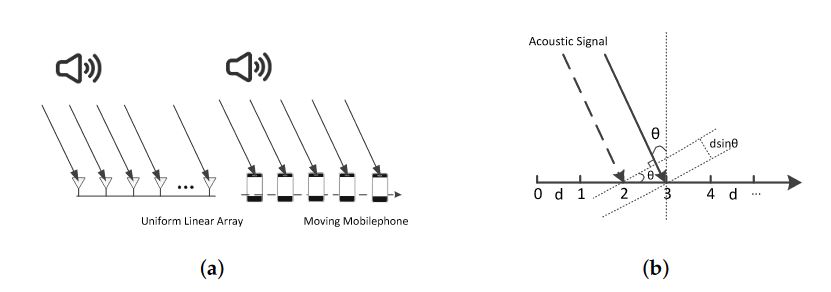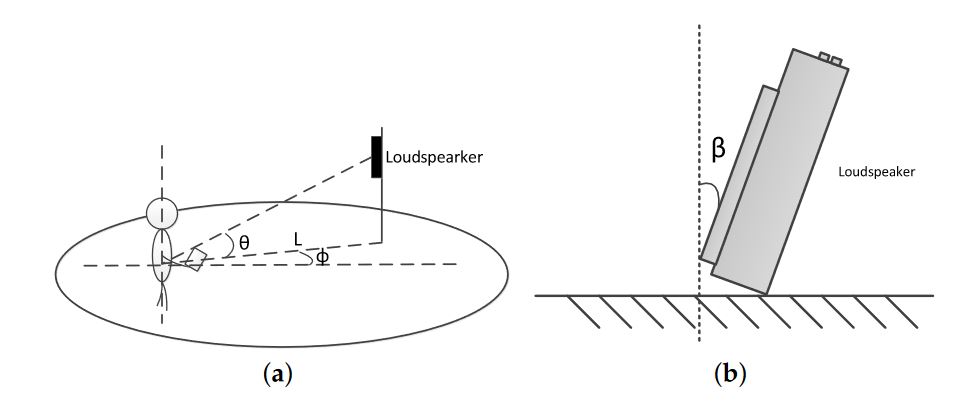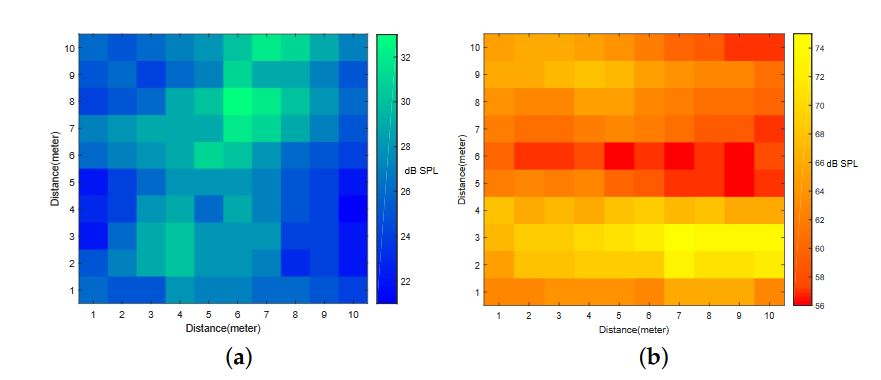ABSTRACT
With the development of localization technologies, researchers solve the indoor localization problems using diverse methods and equipment. Most localization techniques require either specialized devices or fingerprints, which are inconvenient for daily use. Therefore, we propose and implement an accurate, efficient and lightweight system for indoor direction finding using common smartphones and loudspeakers. Our method is derived from a key insight: By moving a smartphone in regular patterns, we can effectively emulate the sensitivity and functionality of a Uniform Antenna Array to estimate the angle of arrival of the target signal.
Specifically, a user only needs to hold his smartphone still in front of him, and then rotate his body around 360◦ duration with the smartphone at an approximate constant velocity. Then, our system can provide accurate directional guidance and lead the user to their destinations (normal loudspeakers we preset in the indoor environment transmitting high frequency acoustic signals) after a few measurements. Major challenges in implementing our system are not only imitating a virtual antenna array by ordinary smartphones but also overcoming the detection difficulties caused by the complex indoor environment.
In addition, we leverage the gyroscope of the smartphone to reduce the impact of a user’s motion pattern change to the accuracy of our system. In order to get rid of the multipath effect, we leverage multiple signal classification to calculate the direction of the target signal, and then design and deploy our system in various indoor scenes. Extensive comparative experiments show that our system is reliable under various circumstances.
RELATED WORK
As smartphones have become common personal belongings in daily life, more and more indoor direction finding systems are being deployed on smartphones. Swadloon leverages the Doppler effects of the acoustic waves for direction finding and indoor localization. Users need to shake their smartphones and walk a few steps before using Swadloon. It only requires off-the-shelf speakers and supports an arbitrary number of users. However, this scheme does not take the multipath effect into consideration.
BASIC ANTENNA ARRAY SIMULATION

Figure 2. (a) Uniform linear array simulation; (b) virtual uniform linear arrays geometry analysis
Figure 2 shows that an antenna array is able to locate the acoustic source by steering its beam spatially. Now, we treat these antenna elements as several smartphones that have the same model and process the target signal in the same way. Then, we can hold only one smartphone in our hand and move it through the same positions of these antenna array elements. The smartphone receives acoustic signals at successive locations at short distances.
DESIGN
According to the VUCA geometry in Figure 3, we regard the first sample point during rotation as antenna element 0. Assuming the user rotates at the constant angular velocity ω, the antenna elements are uniformly distributed over the circumference of a circle of radius r. In our case, the radius stands for the distance between users hand and body (our default is r = 0.3 m for human beings of an average height).

Figure 3. Virtual uniform circular arrays geometry analysis
PERFORMANCE EVALUATION

Figure 5. Experiment design. (a) the sketch of experiment design; and (b) the orientation angle β of the acoustic source
The sketch of experiment design is shown in Figure 5a. The distance between the smartphone and the acoustic source is L. φ is the azimuth angle, θ is the elevation angle of the phone and the loudspeaker and the orientation angle of the acoustic source is β, which is shown in Figure 5b. After we deploy the common loudspeakers in the indoor environment, we hold the smartphone right in front of our body and start rotating our body clockwise for 360◦ with our system on the smartphone running. After the sampling process, we can read the azimuth angle and the elevation angle of the target speaker on the smartphone’s screen.

Figure 7. (a) the noise map of the underground parking lot; and (b) the noise map of the shopping mall
In addition, we measure the noise maps of our experiment scenarios by the smartphone (underground parking lot and shopping mall, 10 × 10 m2) when there are no experimental loudspeakers in the environment. Figure 7a shows that the sound pressure of the underground parking lot is stably around 28 dB SPL (sound pressure level).
CONCLUSIONS
In this paper, we propose a novel scheme to estimate the direction of the high frequency acoustic source in indoor environments. By rotating a common smartphone around the user’s body for 360◦, our system can imitate a VUCA to detect the direction of the user’s destination. Compared to other direction finding schemes, our solution does not require any specialized devices or fingerprints. In addition, it is accurate and efficient. In contrast to our previous work of the VULA system, we solve the Blind-zone problem and reduce the impact of elevation angle between the acoustic source and smartphone to increase the accuracy of direction finding.
In addition, the nonuniform array problem has been well addressed by using the gyroscope of the smartphone. Eventually, by getting rid of the multipath effect using the MUSIC algorithm, the extensive experiments show that our scheme works well in various indoor environments. In addition, we can optimize the algorithm of the VUCA system in order to obtain faster response speed of our system in the future. In addition, we can try to develop an indoor localization system, which is based on our direction finding technique.
Source: University of Science
Authors: Xiaopu Wang | Yan Xiong | Wenchao Huang